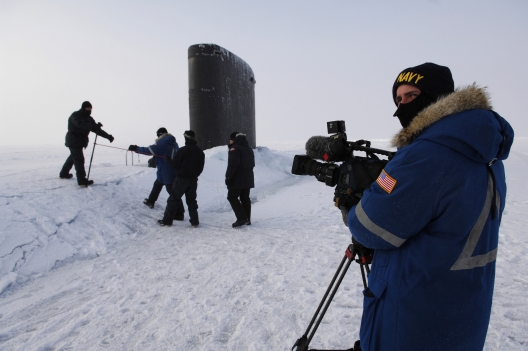 Navy leaders had been preparing to increase the services’ Arctic presence by the mid-2030s, but they are now accelerating the timetable to the mid-2020s due to the warming of the waters and the rapid pace of melting ice.
Navy leaders had been preparing to increase the services’ Arctic presence by the mid-2030s, but they are now accelerating the timetable to the mid-2020s due to the warming of the waters and the rapid pace of melting ice.
Rising water temperatures means less ice in the Arctic, creating a circumstance wherein more open waterways will emerge. As a result, the Navy is putting the final touches on a new Updated Arctic Road Map designed to help the service achieve a more Arctic-capable fleet. . . .
The Office of Naval Research has worked on gear designed to remove ice from the superstructure of a surface ship using special ice-resistant paint for ships. The Navy is also designing heating elements into the superstructure of the ship itself, said Adm. Jonathan White, Navy Oceanographer and Navigator. . . .
“What aircraft can I operate up there during the day? How do I get fuel to them? We want to start to make smart decisions now that lead to an Arctic-capable force in a little over ten years,” White said.
The Navy, which says it is most likely to use amphibious assault ships or destroyers in Arctic waterways in the future, says it is working on technologies designed to make it more possible for ships to operate in the harsh Arctic conditions.
Image: USS Alexandria (SSN 757) in the Arctic Ocean, March 17, 2007 (photo: CPO Shawn P. Eklund/Navy)
